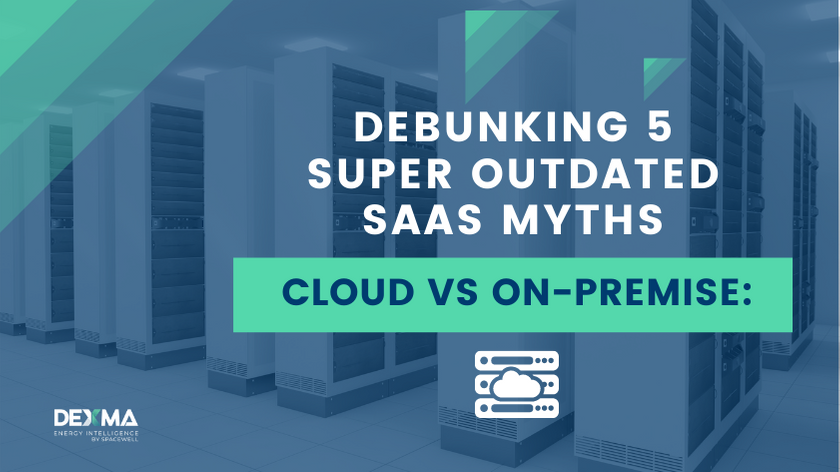Like nature versus nurture, the war between on-premise versus software-as-a-service (SaaS) rages on, and it’s no different in the world of energy analytics.
In this post you’ll find a comprehensive breakdown of the advantages and disadvantages of each type of deployment in the context of Energy Management Software (EMS), so you can figure outwhich is best for your ESCO.
The Great Cloud vs On-Premise Debate
Let’s start with a quick memory refresher. The main difference between these two systems is how they are deployed:
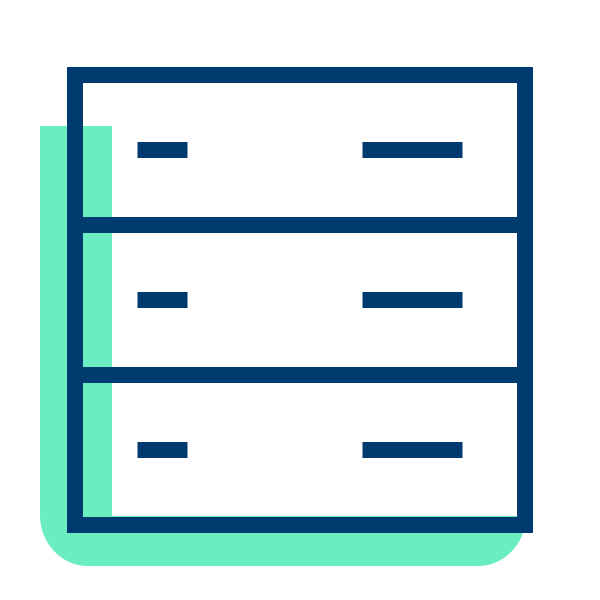
On-premise software |
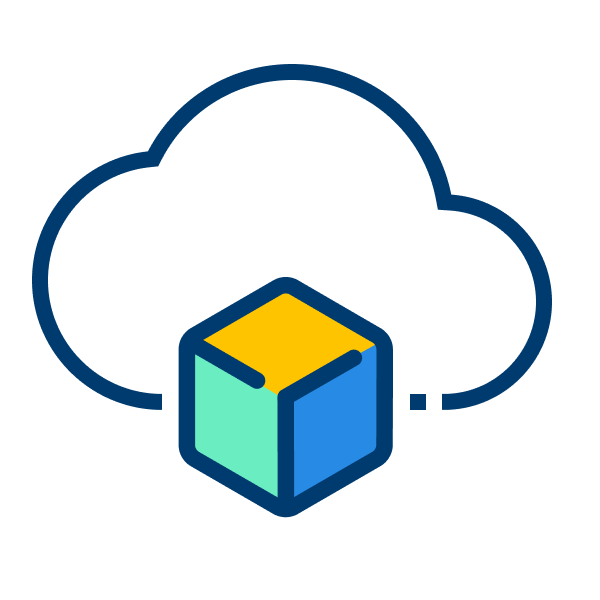
Cloud-based or SaaS software |
| Installed locally on a company’s own servers | Hosted on vendor servers and accessed via web browser |
Today, more enterprise software purchasers (around 69%) are going with software-as-a-service (SaaS) offerings to benefit from the “pay-as you-go” model. That means customer support and upgrades are usually included as part of the overall package.
Still, some legacy companies (especially utilities and financial institutions) prefer the in-house option offered by traditional enterprise software. Apart from the initial up-front fee, on-premise software packagestypically include an annual maintenance fee of around 20%to cover customer support plus the extra cost of having the internal IT department solve issues by downloading and installing hot-fixes and service packs.
So, if the subscription is cheaper than a 20% yearly maintenance fee, then SaaS is a simple choice. But if a cloud-based solution exceeds that 20%, doesn’t on-premise offer a better deal?
Not necessarily. More about this later – first, let’s review some of the most common objections we hear when the cloud vs on-premise debate comes up at DEXMA.
5 Origin Myths: Why Prospects Are Terrified of SaaS
The main objections our energy management experts hear from prospects can be broken down into the following 5 myths:
- Security: “With on-premise aM&T, my data is safer and way more secure!”
- Customisation: “I need to have my solution ultra-customised and branded: no white-label solution is possible.”
- Lock-in: “A SaaS solution will chain me to the provider for all eternity!”
- Scalability:“Sounds great, but if I only have 5 buildings, why should I care?”
- Cost: “You can’t fool me –SaaS is more expensivein the long run!”
最后,我们结束了我们错误的结论ear so often:
“I need/want/simply MUST have a fully customised on-premise EMS solution!”
We hate to break it to you guys, butno you don’t.Read on to find outwhy.
Myth-busting: How Cloud-based aM&T Beats On-Premise
We’ll start by addressing the top 5 most common objections to SaaS vs. on-site energy management installations one by one:
1. Security
Data storage and backup is a huge concern, andon-premise software usually requires serious human intervention.Even automated backup procedures need to be verified, and the quality of the backup process is unknown until a full restore is actually completed.
The question you need to ask yourself here is: “How critical is my client’s data?” If the answer is the MOST critical (as it should be), then the next question is:
Would your on-site data infrastructure built from scratch be able to handle the same risks as a specialised external data centre with built-in, fault-tolerant architecture?
Plus, custom installed software requires a watertight disaster recovery plan. What happens if your only server fails? Do you have the time and resources to test it at least once per quarter?
These are just some of the headaches you can avoid by contracting a dedicated external data centre, such as the one used by DEXMA:
- 数据复制ted in real-time to multiple serversto guaranteemaximum availabilityupon hardware or network issues, and anyone can monitor it.
- For a real example, check outstatus.dexma.comto see the last 10 months of uptime records for the DEXMA insertion server.
- Daily backupsfor the most critical data happen in multiple external servers
- Access control:all physical points of access to the data centre are monitored with video surveillance equipment, plus entry authorisation with prior appointment necessary to visit the centre.
- Power supply: uninterruptedand double-guaranteed by a battery plus emergency diesel generator
- Fire detection system:directly connected to the alarm centre of the local fire department
- Network ofredundant connectionsto the largest Internet exchanger point to minimise downtime
2. Customisation
A custom-installed energy monitoring solution can appear more attractive in terms of design, but it carries a lot of risks.Overly-customised solutions are much harder to evolve and update, and more costly to maintain.Plus,implementation time can be significantly delayed,increasing time-to-market by orders of magnitude.
Besides, top energy SaaS solutions are customisable too! At DEXMA we pride ourselves on our ability to offer custom品牌DEXMA平台的版本.
Behold the awesomeness:
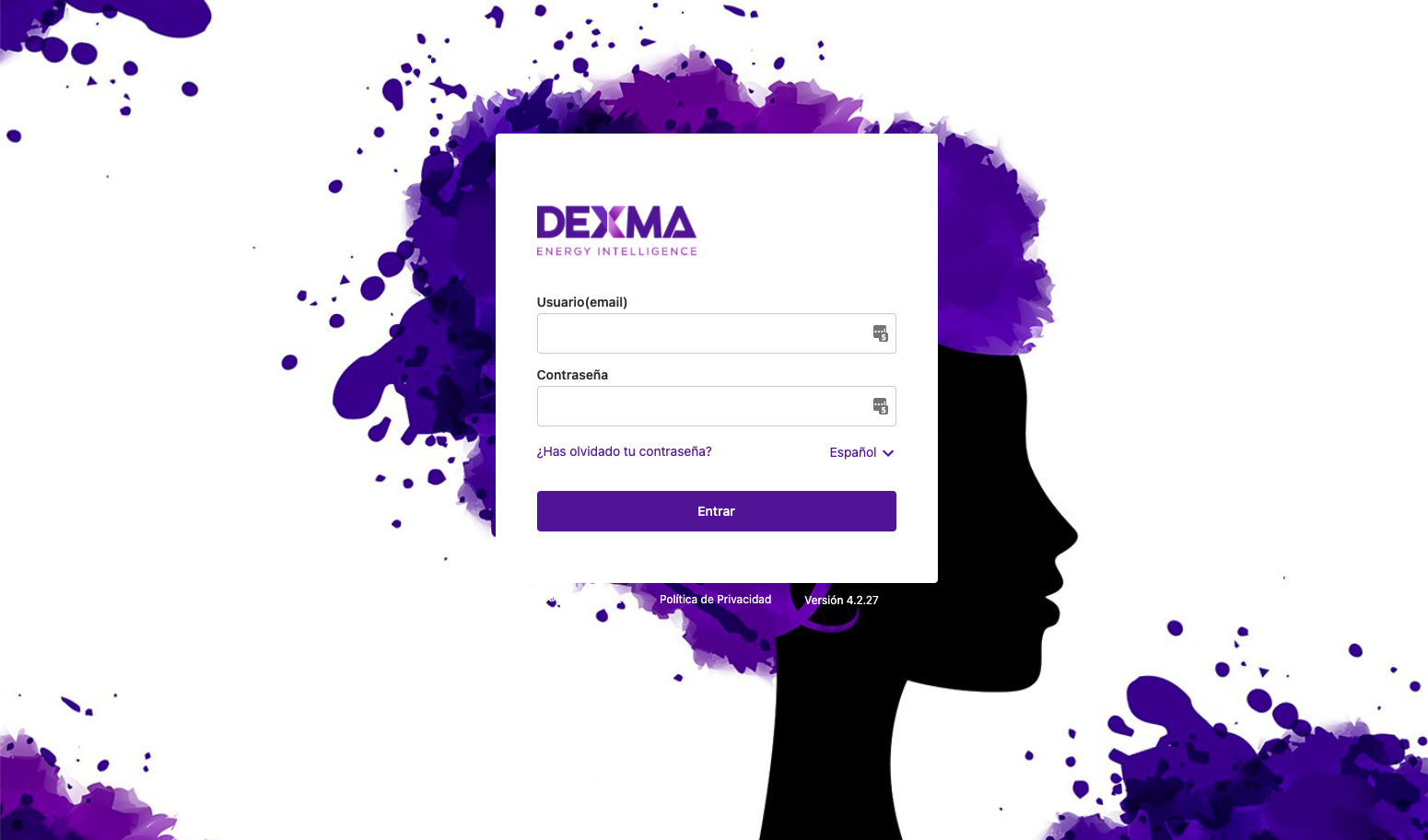

To sum up, the SaaS approach actually enables ESCOs and utilities to offer their customers innovative products and a seamless brand experience at the same time.
3. Lock-In
On-premise systems suffer from a different and infinitely more dangerous kind of lock-in: it’s calledobsolescence. Just like a brand new car that starts depreciating in value the day you drive it home,on-premise systems start becoming obsolete the day they are installed.
It’s also essential to understand that whoever came up with or installed that particular system may have an emotional attachment to it, and will do everything in their power to resist any revolutionary changes. Plus, they’ll need to maintain the system by manually applying OS updates or other time-consuming modifications to multiple layers of software, which might require system downtime that neither you nor your customers can afford.
Finally, if that crucial sysadmin leaves your company, the system risks falling into disuse. Without ample technical resources, top-notch documentation, and various levels of ops support, on-premise systems are destined to become outdated, wasted investments.
The advantage of SaaS energy analytics here is thepay-as-you-go model,which means you can lower risk and switch providers if you decide the solution isn’t right for you – and the data is still yours.
More about that in the next section…
4. Scalability
Even with a smaller portfolio of buildings, the SaaS approach to energy management offers more capabilities and fewer headaches than on-premise EMS systems in 3 important ways:
- Your energy needs are likely to shift over time. As your project expands or contracts in scope, yourSaaS software adapts along with it, being 100% flexible.
- For example, DEXMA’s cloud-based aM&T solution, DEXMA Platform, allows you to upgrade your account with as manydata pointsas you need on-the-go, whenever you want. You can also get rid ofdata pointsyou don’t need anymore. Learn more about thedata pointsconcepthere.
- SaaS solutions can be used from anywherethere is an internet connection, which translates to higher adoption rates and a better overall customer experience.
- Most cloud systems enable easymobile accessibility, whereas on-premise deployments usually need a third-party client to communicate between a mobile device and the on-site installation by means of a virtual private network (VPN).
5. Costs: TCO and Opportunity Costs
Total Cost of Ownership (TCO)
Many companies forget to consider总拥有成本(TCO)of their on-premise software investment, includinghardware, network, backup and development systems.TCO also includes the cost ofhuman capital, such as project management, database, server, firewall, security, backup and help desk resources – not to mentionovertime pay for weekend work to install emergency hotfixes, hardware repairs, or other unexpected security issues that are sure to come up. Onestudy by Strategy&showed that the TCO for a SaaS solution can be up to 50-60% less than traditional on-site installed software over a 10 year period.
For these reasons, the most common argument in favour of cloud-based software is amuch lower entry cost, whereas on-premise systems are far more expensive to design, build and maintain.
Although it’s true that many on-premise costs are hidden, cloud-based solutions still have the following advantages:
- lower initial costs,whereas upfront licensing fees can run up to tens of thousands of dollars in hardware plus development costs for just a mid-level on-site EMS.
- zero maintenance costs(personnel + no need to invest capital in upgrading infrastructure)
- zeroinvestments in server infrastructure and maintenance
But don’t just take our word for it: analyst Derek Singleton atSoftware Adviceagrees.
“Buying a SaaS system lowers your sunk costs by allowing you to minimise your upfront investment,” says Derek. By spreading out your costs overtime via a subscription license, you can better manage your financial risk.“The true savings of a SaaS system come from not having to manage your own IT infrastructure, hosting, data security, or hardware maintenance.”
Opportunity Costs
One might argue that while cloud EMS is cheaper up front, on-premise costs will converge with SaaS after about a decade:
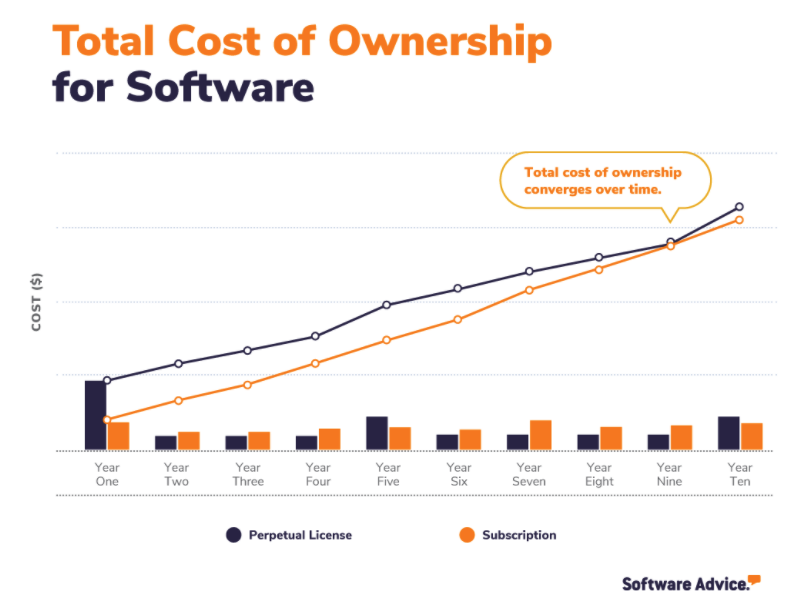
Image credit: softwareadvice.com
But you have to think about what’s actually happening during these 10 years, especially in terms ofopportunity costs.
For instance, while on-premise and SaaS costs are increasing at a linear rate over time,technology evolves exponentially. Keeping your software updated and modernised therefore requires a much more agile solution – and SaaS is the approach that delivers more value over time.
Another aspect of opportunity costs istime-to-market.SaaS deployments are usually faster – with DEXMA Platform, for instance, you can configure your account and have it up and running in just a few clicks. On-premise systems can take significantly longer to install, even if your organisation has more control over the overall process.
Which is the better use of your ESCO’s time: building, implementing and maintaining a software system or delivering and managing energy to delight your customers?
If a small ESCO pays a large upfront cost for a software solution, that cash is no longer available to grow the business. There are simply fewer funds available to devote to their core competency: delivering energy services to their clients.
Numbers Don’t Lie: Net Benefits of SaaS vs. On-Premise EMS
Let’s take a concrete example to see if there is an opportunity cost to your ESCO if you buy:
- TheSaaS option saves you $145,000 in the first year, which could be invested in engineers to build more products or inbound marketing to attract more customers and grow revenue.
- But what if those engineering or marketing efforts brought in well over $1,000,000 of additional revenue to your ESCO?This represents an opportunity cost of $965,000 just in the first year.And that will just keep growing until it ends up dwarfing the TCO.
The above scenario shows the gross benefit of an on-premise of $5,000 from the second year onward. But in reality, $5,000 per year doesn’t even begin to cover the annual IT costs that come with an on-premise EMS solution, which can reach upwards of $40,000. The net benefit in TCO terms therefore still favours a SaaS solution.
Next Steps: How to Calculate TCO
There are plenty of tools out there to help you understand the TCO implications to compare on-premise and SaaS software purchases. A favourite of ours is thisTotal Cost of Ownership Calculator from softwareadvice.com.
Still not sure which deployment model is right for you?Book a consultation with one of our energy management specialistswho can help you determine your needs, and get you a shortlist of options that can best fulfil your energy efficiency project requirements.
Already convinced that SaaS is the way to go? Then it’s time to give our cloud-based solution DEXMA Platforma test drive for free:

